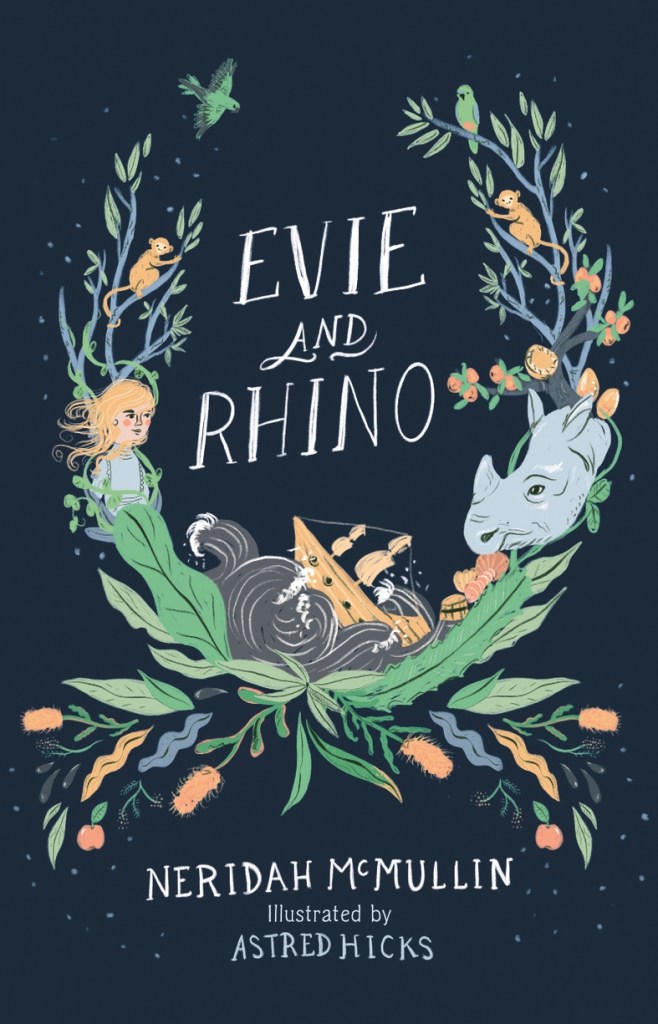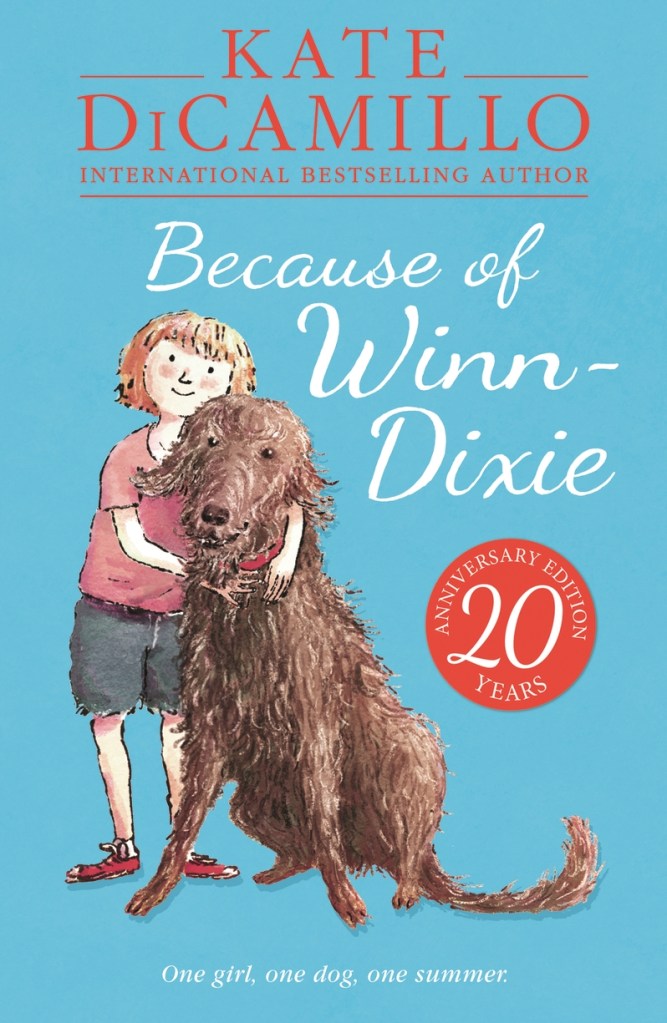Evie and Rhino by Neridah McMullin, illustrated by Astred Hicks

Published by Walker Books Australia
Evie and Rhino is a beautifully written middle-fiction novel about a most unusual and significant friendship.
Neridah McMullin tells us about Evie and Rhino and about her writing craft at PaperbarkWords:
Why a Rhino?
Until recently, rhinos weren’t really an animal I deeply cared for. I found them prehistoric and a little bit scary, but after gazing into an Indian Rhinoceros’s long lashed, brown eyes, I love everything about them.
I need to explain myself. I’m from south west Victoria, near the Shipwreck Coast and from 1850 to 1890, 638 ships were wrecked upon its shores. Hence, the name, the Shipwreck Coast. So I’d grown up with lots of shipwreck stories and loved reading and researching them.
One day, I was reading witness accounts on-line at the State Library of Victoria, when I stumbled upon the stranding of the Steamship Bancoora. Itran aground at Breamlea in 1891. On board was a cargo load of exotic animals from Calcutta bound for the Melbourne Zoo. There was a young elephant, a rhinoceros, six rhesus monkeys, two white cranes and several exotic parrots. This story captured my heart. I imagined the animals had washed ashore and, of course, my protagonist, ten-year-old Evie, finds the rhinoceros asleep in the shallows and leads it home by the horn.
- Why this setting?
Perhaps not as a child, but as an adult, I love rugged, windswept, isolated places. Black seas, thundering waves, sideways sleeting rain. Marram grass covered dunes, screeching seagulls and twisted tea trees, bent over from the prevailing winds. Of course, the rugged weather is thematic with Evie’s own sense of loss. Her parents drowned in a shipwreck two years prior and Rhino is still grieving from the loss of his own mother and homeland. This is what they see in each other’s eyes, a reflection of their own grief.
- How did you develop the relationship between Evie and Rhino?
I love animals and I grew up on a farm with a menagerie. I’ve always been able to connect with them, domesticated and wild. I have a mountain of patience. My maternal grandfather was one of the most gifted horsemen I have ever seen. I spent a lot of time with him, watching him handle them. It was something to behold. I guess today you’d call him a ‘horse whisperer’. His patience, kindness of touch, tone of voice, was kind of magical. I still dream about my grandfather. He always said let an animal come to you. Give them time, let them sniff you. Make eye contact. Let them get to know you. You have to build their trust.
- How do you describe your writing style?
I’m still developing my style, but I try to write tight, sparse prose. I adore poetry. Sometimes, when editing, I’ll go through my work and delete every adjective. I worked as a scientist for a long time and technical writing is very passive and prescriptive. I really had to ‘untrain’ myself. The Hemingway App is a handy way to help keep your writing voice active.
I’m a big fan of Michael Morpurgo (War Horse) and Kate Di Camillo (Because of Winn Dixie, be still, my beating heart). I also love Sarah Winman. Their words absolutely speak to me so I guess I try to emulate them in my own way.

- How do you write grief and hope?
I draw from my own experiences. Don’t get me wrong, I’ve had a blessed life. But I am an empathetic person, it’s not hard for me to feel other people’s pain. I hate cruelty to animals in any form and am against captivity. I only have to imagine myself inside a cage to understand this. It’s not unusual for me to cry as I write.
One of the reasons I love animals is their unwavering loyalty. No matter what, they’re always there. Rhino is most definitely Evie’s rock. He’s such a devoted, steadfast, true-hearted fellow. I can’t believe it when people say they’re lonely. Get a dog, and then you’ll know the meaning of true friendship.
- How do you maintain plot momentum?
Good question! This takes a lot of work. My first few drafts of Evie and Rhino struggled through the middle, so I’ve had to work hard on this. I’m always keen to hear how other writers go about it. Initially, I like to have the full narrative arc of a story. When this is bedded down, I’ll go chapter by chapter to make sure that each one is well paced and leads into the next. I’ve tried using a white board. A friend I made at a writers retreat swore by this method, and it is very helpful, but I hate having to rub bits out and re-do the whole lot. It isn’t flexible enough for me.
I follow lots of writers on social media and I remember reading Kate Messner’s blog. For The Brilliant Deep, Kate used a spreadsheet with the chapters numbered horizontally and characters listed vertically. It gives you a ‘birds eye’ view of who is doing what when. I discovered in my first few drafts, I had too many characters that weren’t doing enough to push the story forward. I learned then that every character has to pull their weight to move the story along.
I have also experimented with post it notes, that I can move around, and for me this works well. We’re all different in how we go about plotting. There’s no right or wrong way, you just have to find your own way. It’s trial and error in finding a way that suits you and I suspect it may change or evolve with every novel you write.
- How do you think a stunning front cover enhances your story?
It can make or break a book. I heard about Astred early on when Walker Books were trying to develop an artistic direction for Evie and Rhino. I loved Astred’s work from the beginning and knew it was a good match for Evie and Rhino. Astred loved the story and I think you can see that in her work. Her Evie and Rhino dinkus in every chapter is very clever and her illustrations of Evie and Rhino and her shells and birds and characterisations are simply perfect. After reading the book, the front cover reveals so much more. It’s symbolic and unique, and I couldn’t be happier with the front cover.
- Which of Astred’s illustrations best capture your protagonist?
I think it would have to be on p. 71, which is also on the back cover. Evie and riding Rhino which shows the level of trust they have in each other.
- Which of Astred’s illustrations best capture the tone of your story?
I’m not sure one single illustration does this, but as whole, it works beautifully.
Who do you anticipate this book is for?
Readership is 9+, but I think it’s for everyone. I’ve had parents message me that they’d read my book with their six-year-old and both enjoyed it. I have friends well into their 80’s who loved it. My parents enjoyed it (but perhaps they are biased). I recently had a phone call from my 19-year-old nephew to let me know how much he enjoyed it. Now, that did make me happy. I’ve had lots of lovely feedback from readers of all ages which has brought me a lot of joy.
Evie and Rhino is middle grade fiction, however, it is genre that can be enjoyed by all.
What are you reading and would like to recommend?
Middle grade fiction is one of my favourite genres, but I am lover of all
books. Poetry, picture books, junior fiction and YA. I love historical fiction and I do love a cosy mystery.
I have recently read an A-List for Murder by Pamela Freeman, The Paris Apartment by Lucy Foley, and Peregrines in the City by Sue Lawson and Andrew Kelly.

Where are you based and how are you a part of the Australian Children’s Literature Community.
I divide my time between Melbourne and Port Fairy. I definitely think of Port Fairy as home, the city is a bit fast for me.
I am a member of SCBWI and CBCA. I love both these organisations, and the incredible people involved. I have learned so much at various conferences and seminars. I have also made the most wonderful friends at these events. I haven’t attended as many as I wanted this year, but next year I definitely will (the youngest has just finished Year 12). I am also a member of The Duck Pond, which is a very inclusive and uplifting community. I don’t know what I would have done without them throughout COVID. The children’s writer community is the best!

3 thoughts on “Evie and Rhino”